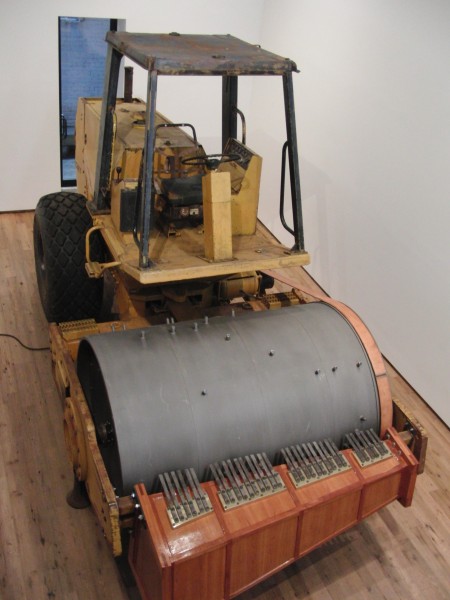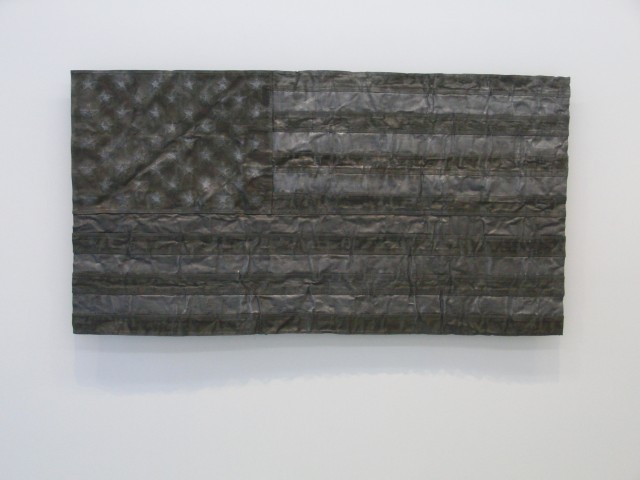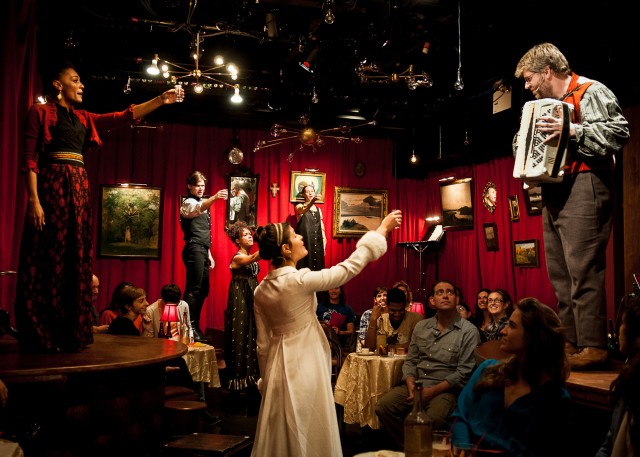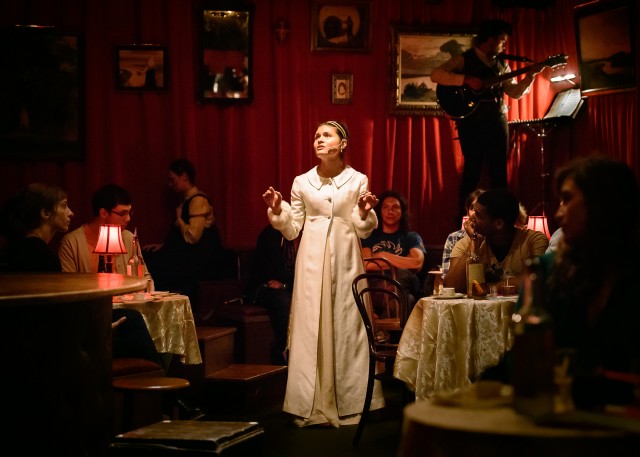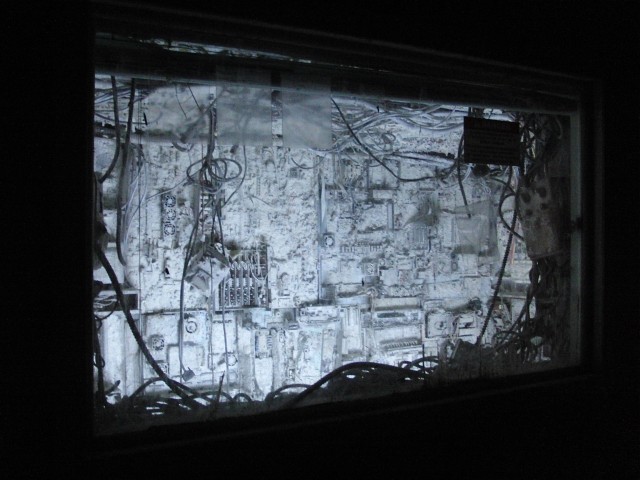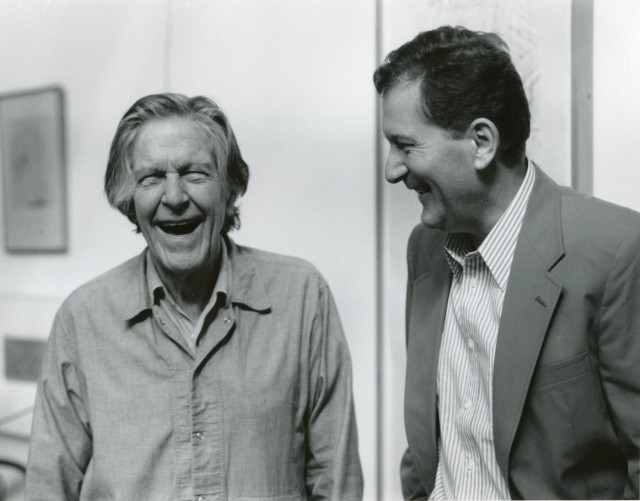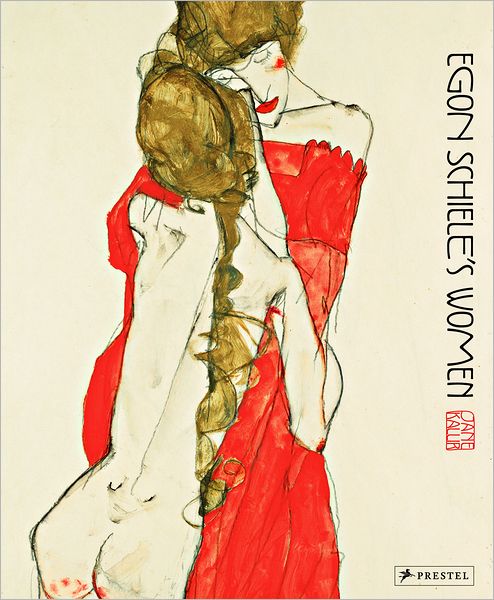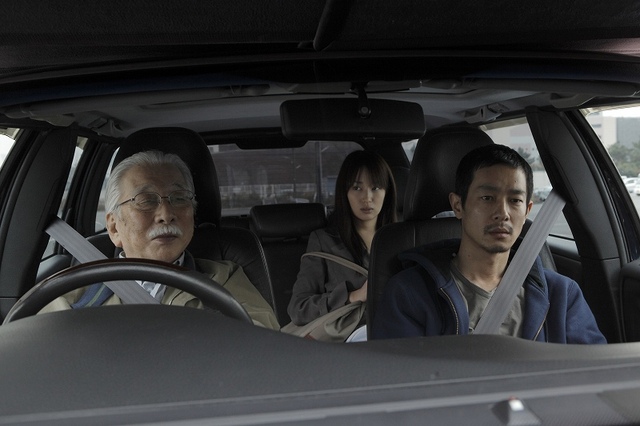
The lives of three very different individuals intertwine in Abbas Kiarostami’s remarkable LIKE SOMEONE IN LOVE
LIKE SOMEONE IN LOVE (Abbas Kiarostami, 2012)
BAMcinématek, BAM Rose Cinemas
30 Lafayette Ave. between Ashland Pl. & St. Felix St.
Friday, October 26, 6:50
Series runs October 26-28
718-636-4100
www.bam.org
www.ifcfilms.com
 Following the Tuscany-set Certified Copy, his first film made outside of his home country, master Iranian auteur Abbas Kiarostami heads to Japan for the beautifully told Like Someone in Love. Rin Takanashi stars as Akiko, a sociology student supporting herself as an escort working for bar owner and pimp Hiroshi (Denden). An older, classy businessman, Hiroshi insists that Akiko is the only person to handle a certain client, so, despite her loud objections, she is put in a cab and taken to meet Takashi (Tadashi Okuno), an elderly professor who seems to just want some company. But soon Akiko unwittingly puts the gentle old man in the middle of her complicated life, which includes her extremely jealous and potentially violent boyfriend, Noriaki (Ryō Kase), and a surprise visit from her grandmother (Kaneko Kubota). Taking its title from the song made famous by, among others, Ella Fitzgerald, Like Someone in Love is an intelligent character-driven narrative that investigates different forms of love and romance in unique and engaging ways. Kiarostami (Taste of Cherry, Close-Up) and cinematographer Katsumi Yanagijima, who has worked on numerous films by Takeshi Kitano, establish their visual style from the very beginning, as an unseen woman, later revealed to be Akiko, is on the phone lying to her abusive boyfriend about where she is, the camera not moving for extended periods of time as people bustle around her in a crowded bar. As is often the case with Kiarostami, who has said that his next film will be set in Italy, much of the film takes place in close quarters, including many in cars, both moving and parked, forcing characters to have to deal with one another and face certain realities they might otherwise avoid. Takanashi is excellent as Akiko, a young woman trapped in several bad situations of her own making, but octogenarian Okuno steals the show in the first lead role of a long career that has primarily consisted of being an extra. The soft look in his eyes, the tender way he shuffles through his apartment, and his very careful diction are simply captivating. Despite his outstanding performance, Okuno is committed to returning to the background in future films, shunning the limelight. A jazz-filled film that at times evokes the more serious work of Woody Allen, another director most associated with a home base but who has been making movies in other cities for a number of years now, Like Someone in Love is like a great jazz song, especially one in which the notes that are not played are more important than those that are. Like Someone in Love is screening October 26 at 6:50 as part of the BAMcinématek series “IFC Sneaks,” which offers an advance look at such upcoming IFC Films as Rodney Ascher’s Room 237, an obsessive examination of Stanley Kubrick’s The Shining, and Walter Salles’s hotly anticipated On the Road, an adaptation of the Jack Kerouac novel with Garrett Hedlund as Dean Moriarty, Sam Riley as Sal Paradise, Kristen Stewart as Marylou, Amy Adams as Jane, Kirsten Dunst as Camille, and Viggo Mortensen as Old Bull Lee.
Following the Tuscany-set Certified Copy, his first film made outside of his home country, master Iranian auteur Abbas Kiarostami heads to Japan for the beautifully told Like Someone in Love. Rin Takanashi stars as Akiko, a sociology student supporting herself as an escort working for bar owner and pimp Hiroshi (Denden). An older, classy businessman, Hiroshi insists that Akiko is the only person to handle a certain client, so, despite her loud objections, she is put in a cab and taken to meet Takashi (Tadashi Okuno), an elderly professor who seems to just want some company. But soon Akiko unwittingly puts the gentle old man in the middle of her complicated life, which includes her extremely jealous and potentially violent boyfriend, Noriaki (Ryō Kase), and a surprise visit from her grandmother (Kaneko Kubota). Taking its title from the song made famous by, among others, Ella Fitzgerald, Like Someone in Love is an intelligent character-driven narrative that investigates different forms of love and romance in unique and engaging ways. Kiarostami (Taste of Cherry, Close-Up) and cinematographer Katsumi Yanagijima, who has worked on numerous films by Takeshi Kitano, establish their visual style from the very beginning, as an unseen woman, later revealed to be Akiko, is on the phone lying to her abusive boyfriend about where she is, the camera not moving for extended periods of time as people bustle around her in a crowded bar. As is often the case with Kiarostami, who has said that his next film will be set in Italy, much of the film takes place in close quarters, including many in cars, both moving and parked, forcing characters to have to deal with one another and face certain realities they might otherwise avoid. Takanashi is excellent as Akiko, a young woman trapped in several bad situations of her own making, but octogenarian Okuno steals the show in the first lead role of a long career that has primarily consisted of being an extra. The soft look in his eyes, the tender way he shuffles through his apartment, and his very careful diction are simply captivating. Despite his outstanding performance, Okuno is committed to returning to the background in future films, shunning the limelight. A jazz-filled film that at times evokes the more serious work of Woody Allen, another director most associated with a home base but who has been making movies in other cities for a number of years now, Like Someone in Love is like a great jazz song, especially one in which the notes that are not played are more important than those that are. Like Someone in Love is screening October 26 at 6:50 as part of the BAMcinématek series “IFC Sneaks,” which offers an advance look at such upcoming IFC Films as Rodney Ascher’s Room 237, an obsessive examination of Stanley Kubrick’s The Shining, and Walter Salles’s hotly anticipated On the Road, an adaptation of the Jack Kerouac novel with Garrett Hedlund as Dean Moriarty, Sam Riley as Sal Paradise, Kristen Stewart as Marylou, Amy Adams as Jane, Kirsten Dunst as Camille, and Viggo Mortensen as Old Bull Lee.
